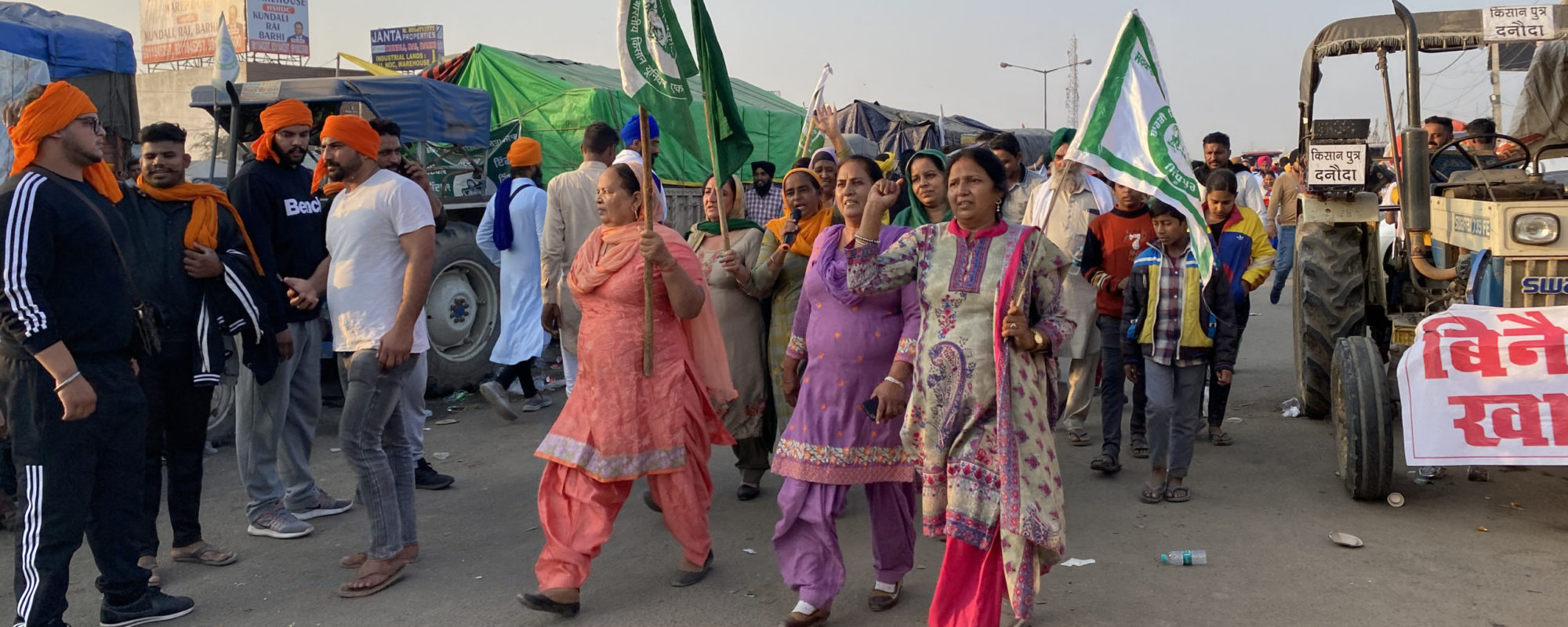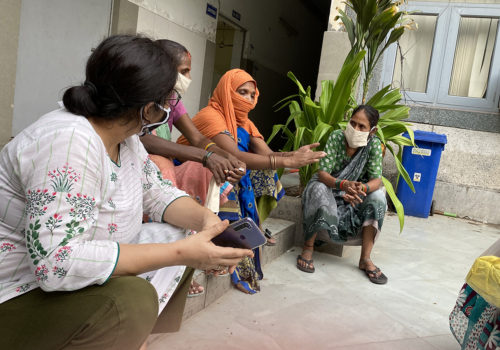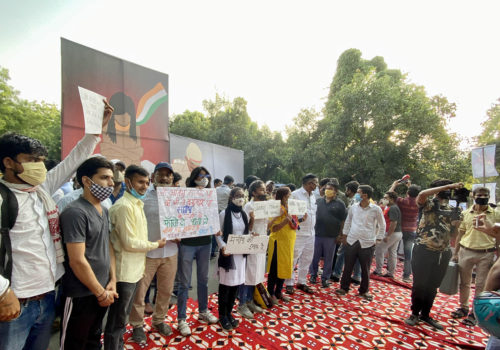NEW DELHI — For six weeks, Parminder Singh has slept on the ground under the open sky amid hundreds of trucks and trolleys parked in the village of Singhu Border, a gateway to the Indian capital from the northern state of Haryana. A farmer from a small village in the northern city of Jalandhar, the 33 year-old left behind his wife and two children at the end of November to travel more than 200 miles to join the largest agricultural strike the country has ever seen.
Still ongoing, it opposes new laws that threaten protections in the form of guaranteed prices that have existed for decades. Prime Minister Narendra Modi has described the changes as “reforms which open doors to new possibilities” by bringing private investment into the farming sector. But farmers fear the increasing influence of big business will saddle them with more poverty and debt.
“All we have is farming,” Singh said.
Tall and broad-shouldered, he hunched over a large trolley covered in posters criticizing the government. He was helping clean up after another day of protest. Music blasted from a nearby tractor as some others walked by shouting slogans.
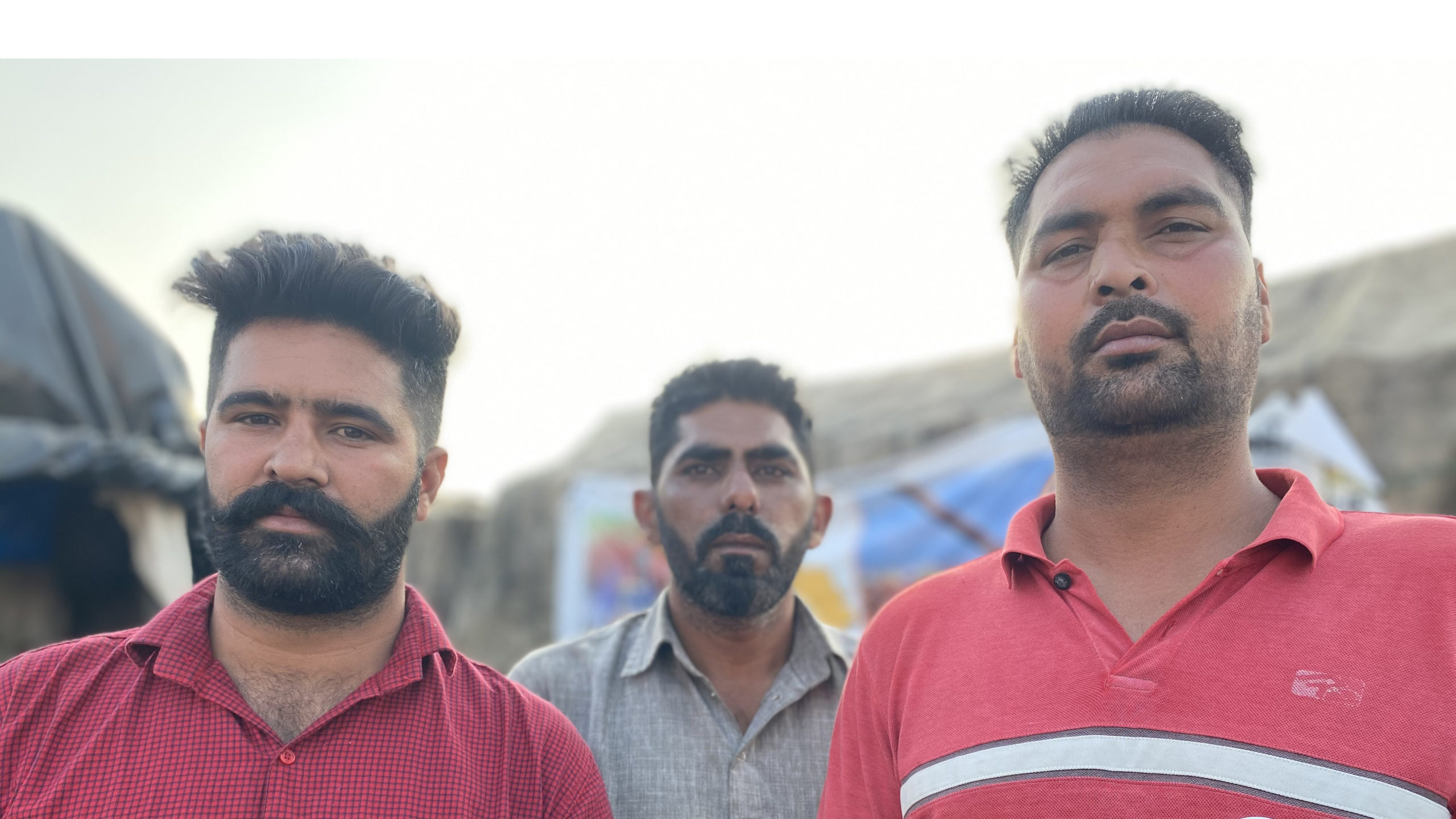
The movement has united some 100,000 demonstrators and 31 farmers’ unions, many from the Sikh community. With traffic halted at four different entry points into Delhi, farmers have turned highways into large camping sites.
And with the protesters saying they won’t leave until the laws are repealed, there’s no end in sight to the demonstrations that are drawing different groups of supporters.
Rising debt
Singh took over his father’s ancestral farmland—where he grows rice and wheat, along with potatoes, cauliflower and other seasonal vegetables—several years ago. Wheat has been his family’s figurative bread and butter as long as he can remember. Most mornings, he heads to the field as soon as he wakes up. “We don’t even look at our own children’s faces first thing in the morning,” he said.
Like Singh, most farmers in northern states of Punjab and Haryana have cultivated rice and wheat since the late 1960s, encouraged by the government as part of its Green Revolution to alleviate hunger.
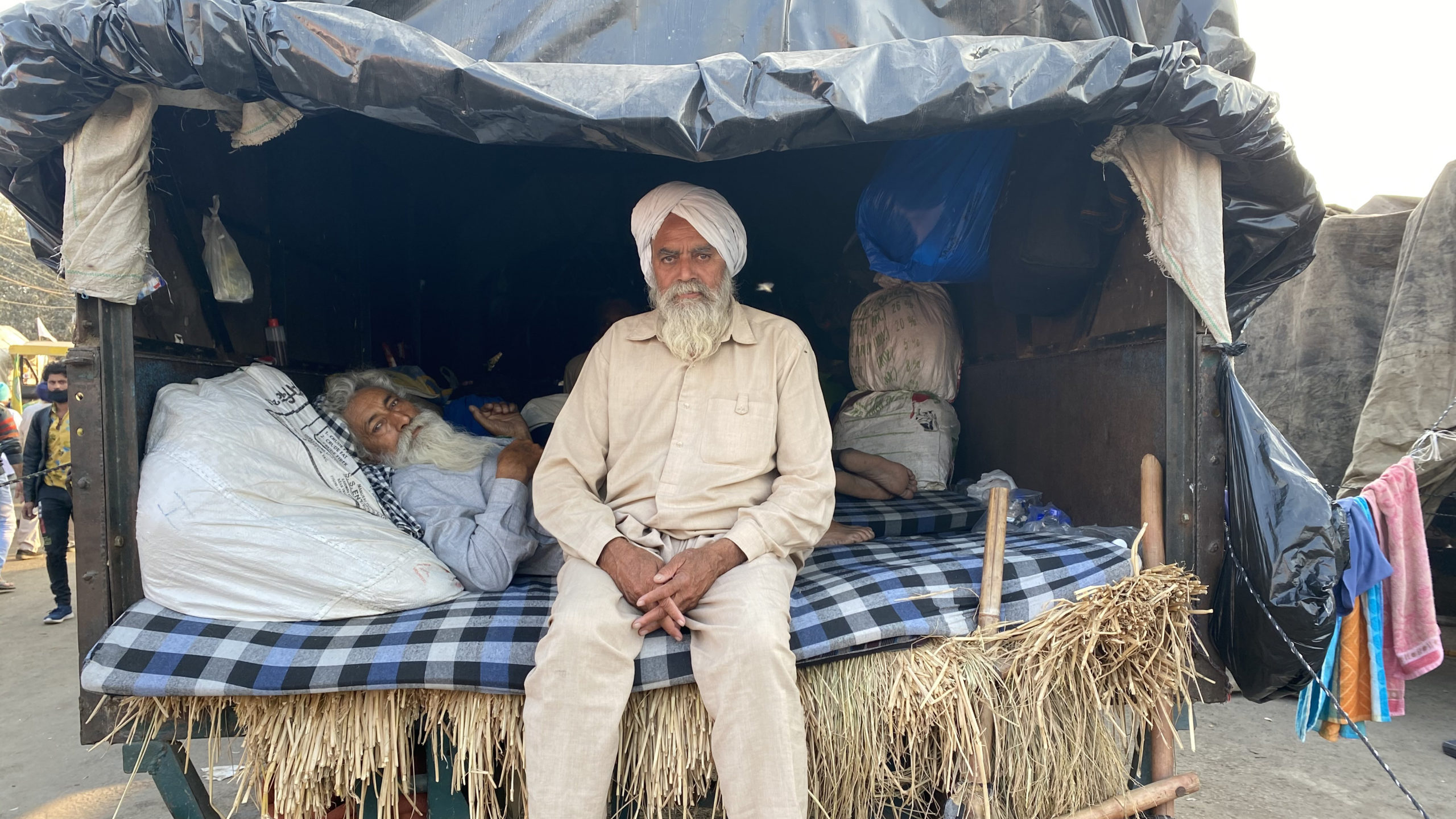
But in the decades that followed, farm incomes shrank. Productivity has consistently dropped because of small holdings and lack of mechanization. As a result, Singh is now among hundreds of millions of farmers who account for more than half of India’s jobs but only a sliver of its GDP.
Subsidies have continued along with an array of concessions such as crop insurance and free water and electricity in some states. But farmers say they were already being slowly being dismantled. They suffered a cumulative loss of more than $600 billion in income between 2000 and 2017, with growth in real farm incomes near zero, according to the Indian Council for Research on International Economic Relations, a Delhi-based think-tank.
Northern farmers, who receive the lion’s share of state handouts, are only marginally better-off: They earn an average of 18,000 and 23,000 rupees ($200-$300) per month. In Punjab, nearly 86 percent of farming households are in debt, according to the Indian Council of Social Science Research.
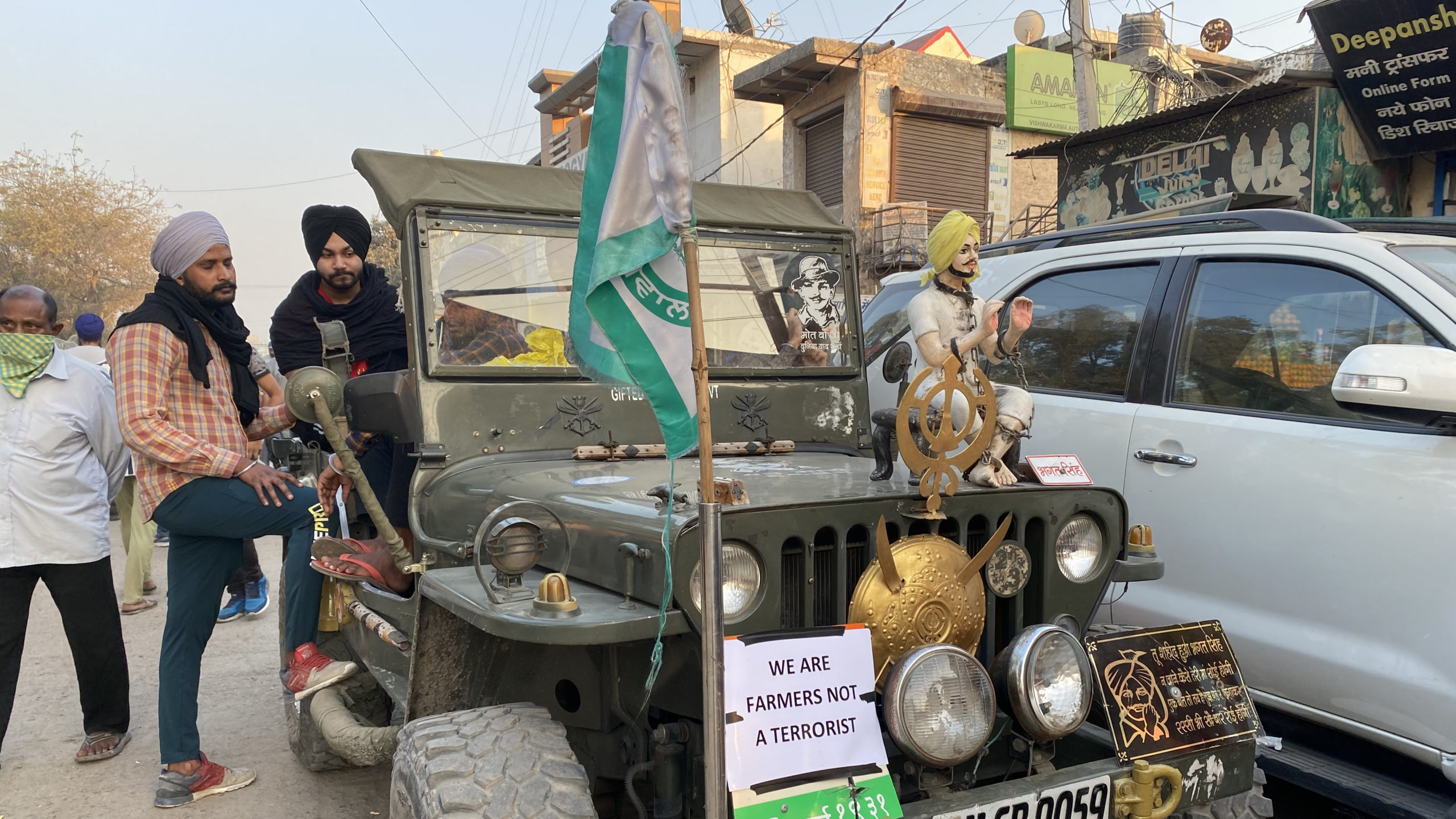
Deadly effect
Such hardscrabble living has had a deadly effect: Many see suicide as a relief measure because of state schemes that compensate bereaved families. More than 10,000 farmers and agricultural laborers killed themselves over work-related worries in 2019, federal data shows.
“To pay it back, they have had to take their own lives,” said 50-year-old Jagjit Singh Dhaliwal, a farmer from Jalandhar, Punjab.
Farmers fear that the new laws will only make matters worse. “Whether it’s wheat or rice, we won’t be able to sell for our price when the big corporations come and the market is overcrowded with options,” Singh said.
“What do they know about the hardships of farming?” he added about the country’s lawmakers. “They just sign their bills in parliament.”
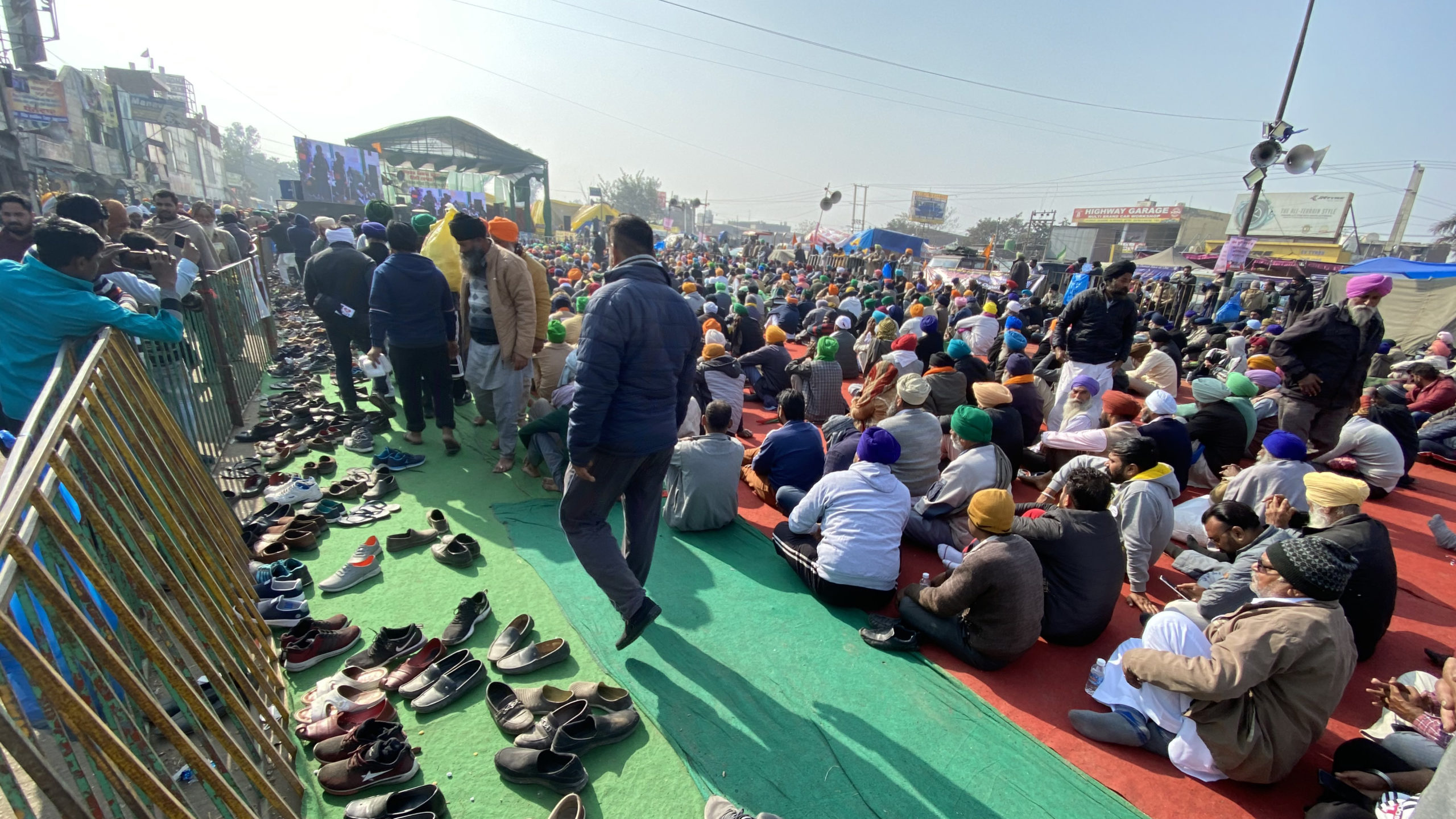
Critics decry privilege
The government says the old system needed scrapping because it has benefitted only 6 percent of the country’s farmers, who have been accused of being significantly wealthier than other farmers.
Images of the protests circulating on social media have reinforced that view among critics: At Singhu, large tents have been set up for communal meals, prayer and distribution of free medical supplies. Field kitchens stocked with fresh produce offer free food to passersby, and free blankets and scarves are doled out for respite from Delhi’s bitter cold and rain.
Skeptics on Twitter say such displays are lavish, reflecting a protest by rural elites rather than “real” farmers working in the field.
But the protesters dismiss the accusations. They say they represent all farmers, who will suffer because the new laws will enable the private sector to set lower prices for their crops, further squeezing an already marginalized agricultural sector.
“We are not here to rest at a five-star hotel,” Singh said. “We are here to demand our rights.”
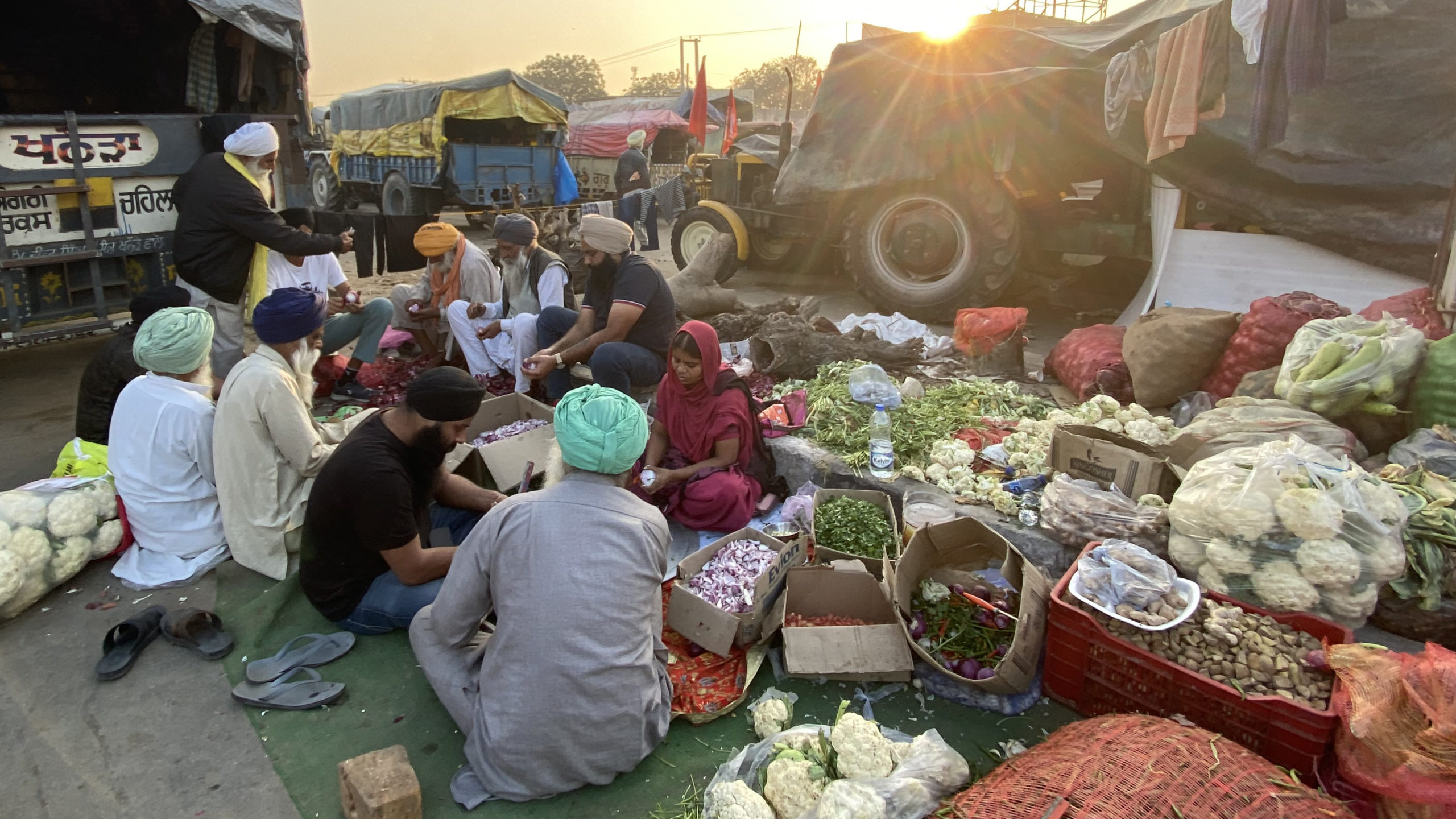
Who’s listening?
This isn’t the first time India’s farmers are protesting, but this time they’ve held the country’s attention for nearly two months, garnering support from all corners of society.
Supporters say images and videos posted on social media by young protesters actually reflect a spirit of solidarity: Pizzas are made from scratch in industrial ovens, protesters lift weights in mini-gyms, and an international aid group even set up a foot spa.
Farmers recently started an informal school in a makeshift tent for local slum children at Singhu.
Wives, children and extended families have also joined. Eighteen-year-old Amratpal Kaur, who came to the protests to support her father, said she wants to fight for his rights: “Farmers are the country’s backbone, and we will not let the government break them.”
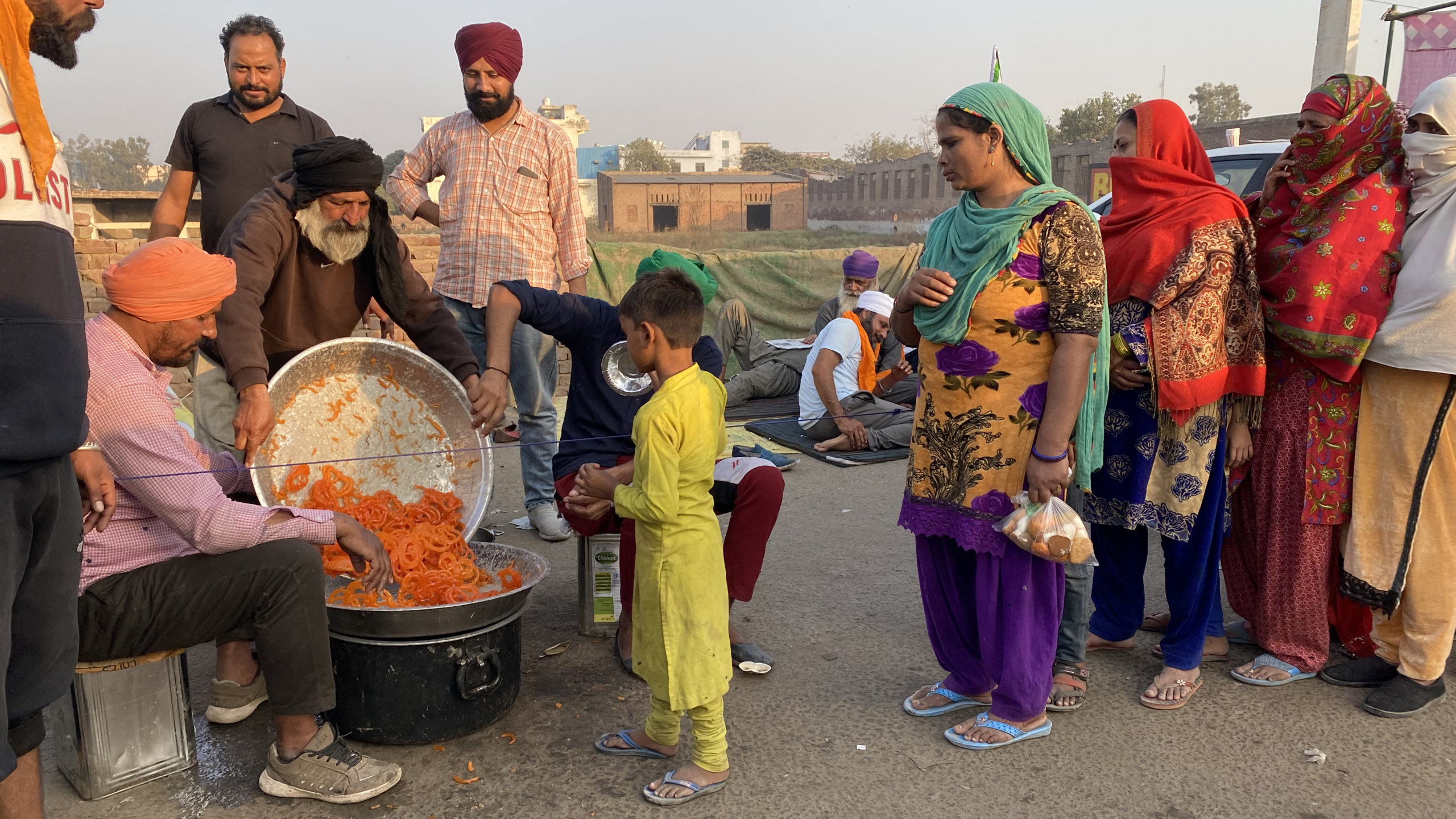
The protests are also uniting different groups increasingly alienated by Modi’s policies: members of the opposition Congress Party, young student activists, Muslims and minorities have all expressed anger at the new farming laws.
Meanwhile, support for the protests has also poured in from around the world—including the Indian diaspora and foreign leaders such as Canadian Prime Minister Justin Trudeau—imploring the government to hear the farmers’ demands.
Several rounds of negotiations have failed and this month, India’s Supreme Court waded into the debate by suspending implementation of the laws.
Unwilling to settle for anything less than a full repeal, however, farmers continue sitting in at Singhu, with political support for the prime minister appearing to dwindle.
“Modi needs to abide by the needs of those people who gave him votes,” Dhaliwal said. “If he can’t do that, he will lose us.”

